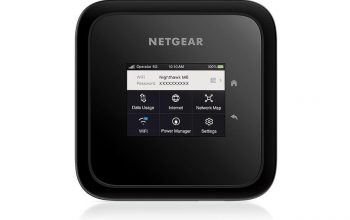
Web3, crypto & blockchain are making waves in art, music, and fintech today. How will web3, crypto, and blockchain affect edtech & learning?
Future of Learning: Learn to earn
Future of Learning: DAOs as universities or Learning DAOs
Future of Learning: Credentials, transcripts
Future of Earning: Career funding: creator coins, securitized music
Future of Earning: Freelancer networks
In this collectible post, I’ll dive into each one of these and where there’s additional opportunity in web3 x learning.
Learn to Earn (L2E)
Taking a note from play to earn (P2E) successes like Axie Infinity, companies like Rabbithole are pioneering a L2E model that rewards people for performing tasks & learning skills. There’s L2E for language learning, reading newsletters, branding and social design, and new protocols, all rewarded with tokens.
Visit: https://web3creators.com
Elements of top designed L2E models includes:
payment for online and offline behaviors that support learning
ability to integrate with other services that track supporting behaviors (e.g. leading to a community, habit formation)
ability to examine depth of learning and weight credential appropriately – teaching another person is a far more robust retention method than reading about something
Learning DAOs
Another innovation area is universities as DAOs or Learning DAOs. DAOs are decentralized autonomous organizations or decentralized communities where any token holder has voting rights & a shared “bank-account.” They are a few great primers on DAOs for those new to the concept. DAOs can manage and deploy L2E courses, credentials & learning environments for their community. Colleges can be slower moving given the amount of time it takes to accredit a new degree or field of study, so DAOs might well have an edge in fast moving fields.
Here’s a few things the best learning DAOs will need to get right:
scholarships & admissions – many DAOs today are pay-your-way-in and plainly that’s not equitable. many DAOs are also first-come-first-serve this means great potential members who arrive later may never get the opportunity to pick the initial group of limited tokens
trusty & safety – so many things can be fallible while operating a social, living, breathing community. a robust group of standards with community escalation policies is crucial to ensure a thriving social community
choose signal v. skill priority – the challenge with many higher education institutions is that they have chosen to prioritize the signal of their credential versus specific skills as what brands them in the market. It is easy to fall into this trap if assessment, admissions, and brand aren’t thought through.
proof-of-skill creep – many universities experience grade inflation, which makes differentiation difficult. For your learning DAO to maintain the value of it’s credentials, it’ll need to ensure decentralized management holds the same bar
Another exciting potential in credentials is real-time skill acquisition and display. Given crypto credentials can be earned for individual tasks, students wouldn’t need to wait 4 years to get credit for their knowledge. Real-time progress with their degree could be visible for any anytime. If an employer decides xyz skills or 75% will do, the learner may not need to go further.
People are calling this “proof skill” and it overlaps with the world of “competency based education” = a movement in education that has tried to provide learners credit for what they know, not simply butt-in-seat or Carnegie hours that are based off of time spent in class.
Here’s a few things crypto credentialing platforms will need to get right:
partnerships with employers – new types of credentials have always been hard to determine because adoption by employers is slow. it’s possible for these to rely on top college or university rankings
review sites for DAOs and crypto credential issuer – as any new industry emerges, consumers and employers need to dig through the noise. There are already practically 1M DAO members today
public education and category creation – the hardest part of any new credential is acceptance by the population. new credentials will need to collaborate and share where they have found pockets of acceptance hence the whole industry can succeed.
Career Funding
Formal education and credentialing can be an important avenue for many varieties of work. But there are some categories of work, especially those in the creative fields, where education takes the form of experimentation and exploration. Music, Art, and indeed any form of content creation, whether it be on Tiktok or movie screens can all get into this category. But this experimentation needs resources. That’s why is creator coins and securitized music such an interesting portion of web3.
Here’s a few things creator coins and securitized music builders should get right:
Clear design choice on fungible v NFT – tokens are fungible, NFTs aren’t. I’m seeing players build both right now. The NFTs definitely have supporter fan value, but may have different implications for liquidity and how creator coins are valued.
Consumption v. hold focus? Platforms naturally want to offer an outlet for liquidity. Does this mean spending the currency on their platform for special 1v1 interactions with the artists? Does it mean creating a secondary exchange? What behavior do you need to drive with fans, speculation or real interest?
First-come v gated access? Similar to learning DAOs, creator coin builders need to figure out if they need to reward loyal fans and give them access, thus seeding their initial users with more of a fan club audience, or open it up to the general public, increasing the chance that prices rise quickly as crypto whales come in.


